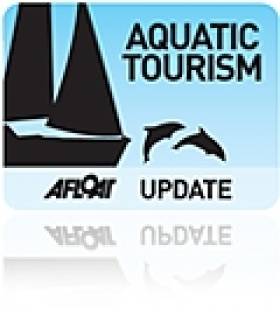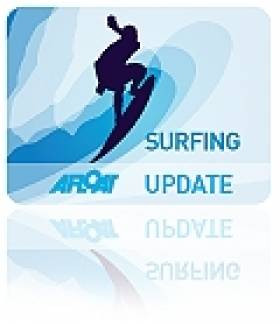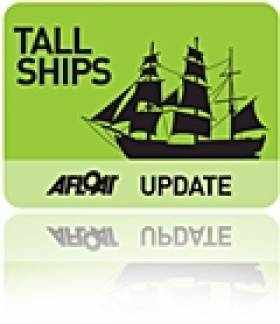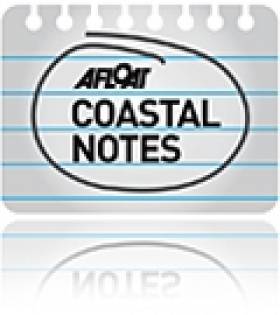Displaying items by tag: business
Wexford-Based Startup Will Get You Hooked on Kitesurfing
#KITESURFING - The Daily Business Post's recent focus on businesses in Wicklow and Wexford turned its focus to Niall Roche's start-up kitesurfing school based on Duncannon beach.
Roche runs Hooked Kitesurfing, which was set up a year ago to teach people the ins and outs of one of Ireland's fastest growing sports.
"I took a jump to turn my hobby into a business," said Roche, who took a redundancy package from Intel to set up the school - the name of which was inspired by his own addiction to the watersport, watching events on television a decade ago.
"Once you get the kite in your hands the thrill of having some much power, it's unbelievable. I love passing that onto students."
The Daily Business Post has more on the story HERE.
Survey to Assess Value of Irish Angling
#ANGLING - Inland Fisheries Ireland (IFI) has appointed Tourism Development International (TDI) to undertake a Socio-Economic Survey of Recreational Angling in Ireland.
The overall objective of the survey, which will run over the course of 2012, is to establish the current volume and value of domestic and overseas recreational angling in the country.
Pike, coarse fish, bass, salmon, sea trout, brown trout and sea anglers will all be invited to participate in what is described as Ireland's most comprehensive angling survey undertaken in decades.
The survey will inform IFI and its tourism partners in relation to the business of angling in Ireland and also enable improved strategic planning and decision-making in terms of product development and marketing.
"Anglers are the key to this survey," commented Minister of State for Natural Resources Fergus O'Dowd. "They know the resource and they understand the importance of sustainability. What anglers contribute to Ireland’s economy is unknown but I am certain that it is significant.
"Angling takes place in every river and lake in Ireland and all around our coastline. There is no town or village in Ireland that doesn’t have anglers."
He added: "It is imperative that the inland fisheries and sea angling resources are managed in the best way possible to ensure enjoyment for our local and visiting anglers, sustainable jobs in rural communities and maximising its potential to add to Ireland’s economy.
"Getting the right information from those most involved will greatly assist in improving the angling product."
The survey comprises two parts: a household survey and a survey of recreational anglers which will commence in April. Anglers will be met at fishing locations throughout Ireland and invited to participate there and then, or later by phone or online. IFI says that every effort will be made to accommodate participation.
- angling
- Inland Fisheries Ireland
- IFI
- Tourism Development International
- TDI
- survey
- SocioEconomic Survey of Recreational Angling in Ireland
- Pike
- Salmon
- Sea Trout
- brown trout
- coarse angling
- sea angling
- tourism
- business
- marketing
- development
- Minister of State for Natural Resources
- Fergus O'Dowd
- sustainability
- inland waterways
- jobs
Business Brisk in Dun Laoghaire for Charter Yachting Company
#LEARN TO SAIL - Charter yacht trip firm GoSailing.ie is weathering the recession, as the Sunday Business Post reports.
The venture - which provides daily and corporate yacht excursions since setting up in 2000 - reacted to a shortfall in customers due to the changing ecomonic climate by relocating from Westport to Dun Laoghaire marina, where business has been brisk.
Aaron O'Grady, a veteran of the Irish Olympic sailing squad, started the business with his father Pauric, the duo investing in a 54-foot yacht The Explorer to run sailing trips off the Mayo coast, helping novices learn to sail.
They later teamed up with business manager Bref Kennedy, who says that the recreational sailing business has plenty of room to grow.
"Our main goals are trying to break the perception of sailing that pervades in Ireland and also to introduce people to the exciting world of sailing on the extremely under-used and beautiful coastline that exists right on our doorstep," said Kennedy.
GoSailing is also the only company providing a charter yacht service on the east coast, according to Kennedy, which is "amazing considering we are an island nation".
Charter yachting trips around Dublin Bay, Killiney Bay and Dalkey Sound typically go for around €35 a head for groups of 12. For more details visit GoSailing.ie.
Inventor Hopes to Raise Funds for Surfing 'Swiss Army Knife'
A Limerick-based inventor has created what could soon become the 'Swiss Army Knife' for surfing enthusiasts the world over, The Irish Times reports.
The SurfBuckle, developed by Nick Ryan of new surfwear company LirChild, is a multi-purpose tool that allows surfers to adjust fins on their board as well as to remove and comb board wax, and can be worn as a belt buckle.
Ryan says he got the idea for the SurfBuckle from a friend who was stuck for a tool to remove fins from his surfboard at an airport.
The marketing and entrepreneurship student is currently using Fundit.ie to raise the €30,000 needed to start production of the tool, which will be built from steel and 'bioplastic'.
The Irish Times has more on the story HERE.
Waterford Businesses Want Fair Pricing at Tall Ships
Waterford's business and tourism leaders have demanded "fair pricing" in the city during the Tall Ships Races this summer, The Irish Times reports.
Reports have circulated that local hotels and other businesses were planning to raise their prices for the half-million visitors expected to descend upon the south coast city at the end of June.
But Fáilte Ireland, Waterford Chamber of Commerce and Mayor Mary Roche are backing a fair-price initiative, urging the city's many shops, cafes, restaurants, bars and tourist attractions to offer value for money.
Mayor Roche said the hosting of the Tall Ships Races was "a priceless opportunity" to showcase Waterford on an international stage.
The Irish Times has more on the story HERE.
MEP Highlights Possibilities for Marine Tourism
An Irish MEP has urged the new Government to exploit the "endless possibilities" of marine tourism in Ireland.
Speaking at the European Parliament in Strasbourg earlier this week, Sean Kelly MEP said: “My own constituency of Ireland South alone boasts a huge array of tourist attractions along the sea shore. Deep-sea and river angling in East Cork, whale-watching in West Cork, surfing along the beautiful beaches of Kerry."
Kelly argued that the draft Atlantic Area Strategy - designed to facilitate greater economic co-operation between coastal countries in western Europe - would encourage new business start-ups in popular water sports such as surfing and other coastline activities.
"I would like to see more surfing competitions, marine festivals and a determined marketing campaign to attract international visitors to the region," he said, adding that tourism bodies in Ireland and the UK specifically should work together on a joint action plan.
“The whole island of Ireland should reap the rewards of having one of Europe’s best coastlines for water sports and marine tourism," said Kelly.


























